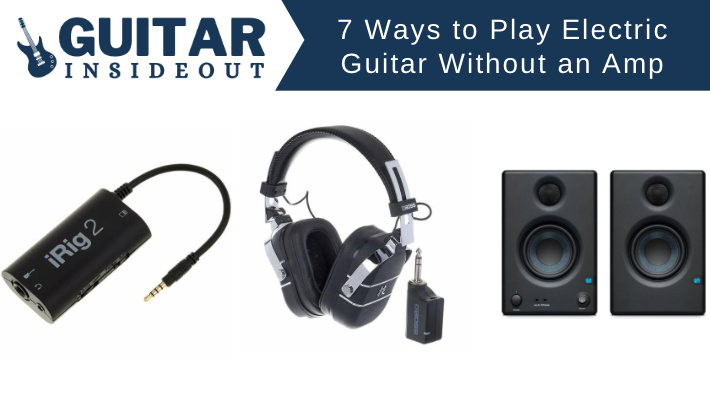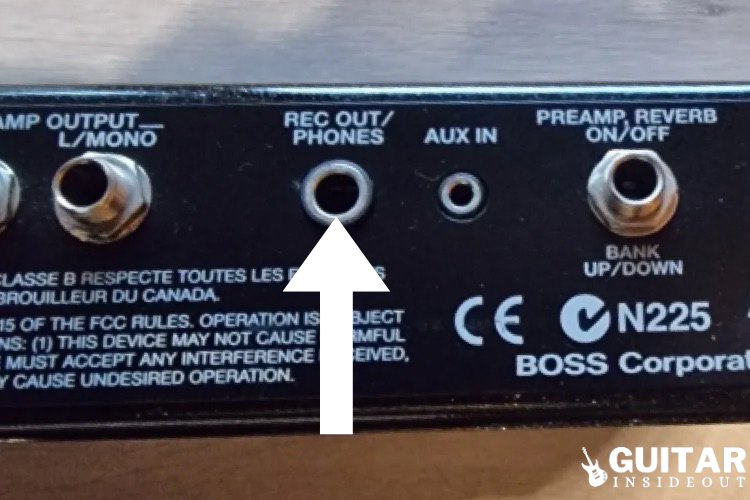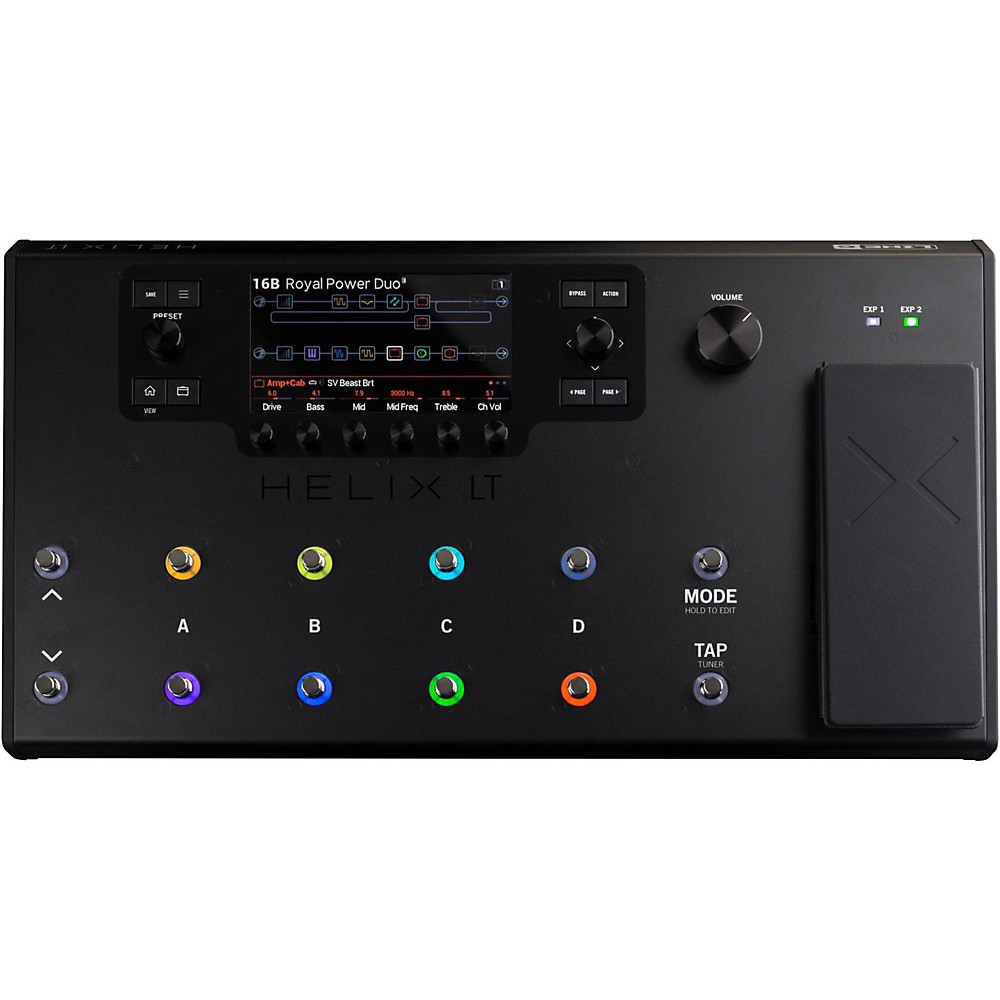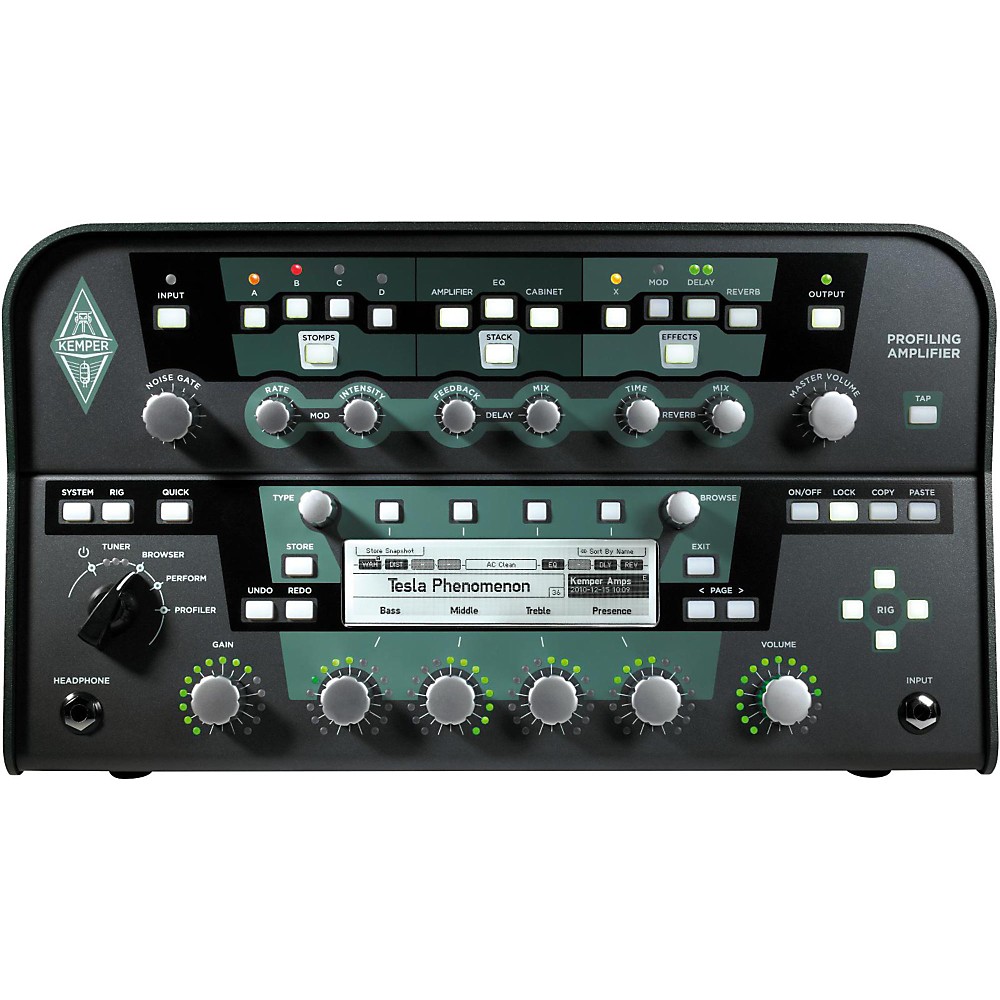Wanting to play electric guitar without an amp is becoming popular. More and more guitarists, from bedroom players to famous bands, are finding different methods to play without an amp.
Amps are great, don’t get me wrong. I love mine and have no desire to give them up or trade them in any time soon. But even I admit they can be awkward.
They’re loud, often large and heavy, take up space etc. Maybe you don’t have room for one in a small apartment. Maybe you need to practice quietly and not disturb neighbors, or you travel a lot and need a different solution.

So, can you play electric guitar without an amp?
Yes, there are a few options to play guitar without an amp. You can use an audio interface that connects to both your computer and a set of speakers or studio monitors. Alternatively you can use headphones with the interface if you want to play quietly. There are also multi effects pedals that have headphone and speaker jacks, meaning you don’t need an amp to use them.
If you want to take a closer look at the choices for playing an electric guitar with something other than an amplifier then keep reading. We’ll go through each one, explain how they work and outline the pros and cons.
Ways to Play Electric Guitar Without an Amp
Mac or PC
Probably the way most people want to play without an amp. Everyone has a PC or Mac so it makes sense to use them to play guitar through.
Unfortunately it isn’t quite as simple as just plugging your guitar directly into one of them. Nothing is ever that straightforward, right?
No, you’re going to need something called an audio interface that goes between the guitar and the computer.
An audio interface acts as a go-between for the guitar and computer. You plug your guitar and computer into it and it takes the signal from the guitar, converts it to something the computer can understand, then software allows that new signal to be output as sound from the computer.
Simple audio interfaces are common and not too expensive. They have some nice benefits too. Not only can you play your guitar through your computer device but you can also record yourself.

Recording yourself is good for both beginners and more advanced guitarists alike. Tracking your progress by recording yourself every week or month is a good way to see how far you’ve come.
And as you get better you can start creating simple tracks and playing about with the various recording software.
But probably the biggest reason for using your computer or Mac as an amp is the huge range of amp and effects pedal sims you get through modelling software. Sims stands for ‘simulations’ and does exactly what it says – simulates a type of amp or effect.
Programs like BIAS FX, Guitar Rig, Neural DSP, AmpliTube and Line 6 Helix Native all have a massive selection of amp and pedals sims. You can access virtually any type of effect or well known amp as well as creating your own tones and sounds.
The only down side is whilst they do have free versions they are fairly limited. Which means to take advantage of the best features you’ll have to buy them.
iPhone or iPad
Playing through a Mac or PC is always going to give you more options but an iPhone or iPad is a good alternative. What you lose in features you gain in portability.
In order to play through a device like an iPhone or iPad you will need some way to connect your guitar to them. Enter the iRig – the easiest and cheapest way.
To sum it up quickly: the iRig it’s just a small device that sits between your guitar and tablet or phone. It’s like a more basic audio interface.
Once you’ve connected your guitar to your iOS device through iRig you can simply plug in speakers or headphones to play. You will need some software as well though.
Most of the software that works on PC’s and Mac’s have iOS apps. They’re actually very good and whilst not having quite as much flexibility and all the bells and whistles of the main software they are still excellent.
AmpliTube comes with iRig HD 2, so you can get started playing straightaway. But BIAS FX, Mooeer GE Labs and GarageBand amongst others all work well.
Sadly whilst there are many options for Apple users Android is lagging behind significantly. This is apparently due to Android having some major latency issues that Apple devices don’t. So for the time being if you use an Android phone or tablet you’re a bit stuck.
Speakers or Studio Monitors
Most of us have a set of speakers around the house. Either old one’s or as part of a stereo or sound system.
And any speaker can be used as a guitar amp. So being able to use them instead of an amp makes for an inexpensive solution.
Studio monitors are also fairly well priced and are good for recording and playing at lower volumes if you’re practicing at home (and don’t want to annoy the neighbors!).

Both will need an audio interface or iRig, as mentioned above, to work with a guitar. As we’ve touched on a few times already, you can’t plug a speaker or headphones directly into a guitar – there needs to be a device to process the signal.
So an audio interface like the Focusrite Scarlett 2i2 would be perfect. It’s affordable, very simple to use and comes with the Pro Tools and Ableton Live Lite so you can play around with lots of guitar plugins.

For an even cheaper option the Behringer UM2 is very well priced and whilst not quite as good as the Focusrite it comes with 150 virtual instruments and FX plugins. A great place to start if you’re completely new to audio interfaces and playing your guitar through something other than an amp.

Multi Effects Pedal
There are two different types of multi effects pedals. Those that emulate effects and pedals and those that simulate amps and cabs.
It’s the latter of these two that you want to play without an amp. These pedals can either go directly into a PA or studio desk when playing live or recording. But if you only want to play at home for practice then you can plug speakers into them and they usually have a headphone out jack for silent playing.

An awful lot of multi effects pedals have the option to play through headphones. Even my Mesa Boogie V Twin, a preamp pedal released in the early 90’s, has a headphone out with speaker simulator circuit.

Line 6 are at the forefront of amp-less playing with the Helix series. The HX Stomp allows you to have effects, amps, cabs and mic’s all in one tiny stompbox and is incredible value for what you get.
It can be used as a multi effects pedal with a regular amp, an audio interface or a stand-alone amp when paired with speakers, studio monitors or headphones. And the full blown Helix goes even further with almost limitless tone options.

That’s before we’ve even mentioned the well established modellers and processors like the Fractal Axe FX and Kemper. Their growing popularity shows how the traditional amp setup is changing rapidly.

Headphones
Playing guitar with headphones is very popular amongst both those with and without an amp. If you have a family or roommates that you don’t want to annoy or neighbors who might hear you through the walls then playing silently with headphones is essential.
But playing with headphones isn’t as simple as plugging them into your guitar. Sadly that doesn’t work!
You’re going to need one of the choices listed here in conjunction with headphones to play your guitar through. Be that an audio interface, iRig, multi effects pedal or micro amp.
Guitars need something to take the signal they produce, convert it and then amplify the sound. Headphones can’t do that on their own, which is why you need something in between the guitar and headphones like an audio interface or amp.
BOSS Waza Air
The BOSS Waza Air is a sort of combination guitar amp and headphones. Essentially a guitar amplifier built into a pair of headphones. Completely wireless and, according to BOSS, uses a “gyro sensor and moving 3D space to deliver natural “amp-in-room””.
They’ve called it a ‘personal amplifier system”. So you can play your guitar to yourself whilst also playing along to music streamed directly into the headphones. All done silently so you aren’t annoying anyone.

It comes with an app, as pretty much every new piece of technology does now, and that lets you choose from 5 different amp models and over 50 effects. You can even alter where the amp is positioned as you hear it – so move where it feels like the sound is coming from in your room.
I’ve yet to try the Waza Air but as a practice tool it seems hard to beat. It’s definitely going to save space and is ideal for playing without inflicting it on family, housemates and neighbors. (‘Waza Air’ is a silly name though!)
Micro Amps
Ok, this is cheating slightly because technically a micro amp is still an amp. But they’re so far removed from a traditional guitar amplifier I felt they were worth including.
Especially if the reason for wanting an alternative to an amp is due to regular amps size and loudness. Micro amps absolutely solve that problem.
So, what is a micro amp? Well the name says it all really – they’re tiny amplifiers.
You can get shrunk down versions of regular amps that you can place on a desk, like the Marshall Mini or Blackstar Fly 3.

There are stand-alone tiny desktop amps like the Yamaha THR and Positive Grid Spark.

Or something you can plug directly into your guitar, like the Vox amPlug or Fender Mustang Micro.

The problem with some of these types of amps is you’re sacrificing sound quality for their size and convenience. Some people can live with that as they’re just a very basic practice tool.
But it’s best to try them first in case you find the sound isn’t good enough. Thankfully they’re not all like that – the Yamaha THR and Positive Grid Spark, for example, are just quality small amps.

Electric Guitars with Built in Amps
There are guitars with amps built in to them. They’re fairly rare though, mainly because they don’t work very well and so never caught on.
I wouldn’t recommend even taking a look at one. The other choices listed here are going to be far better and really an amp within a guitar is little more than a gimmick.
Which is the Best Choice for Playing Guitar Without an Amp?
That depends on what you need and why you don’t want an amp. Each option has their pro’s and con’s.
Using a PC or Mac is possibly the simplest way because almost everyone has one. The drawback with that option is to get the best tones and sounds you have to invest in the software, which can be expensive.
Tablets and phones are great for portability, recording on the go and simple practice. But you lose a lot of the functions and features you find in PC/Mac software or multi effects pedals.
Speakers or monitors work well and sound good. You can play at appropriate, low volume if you’re practicing at home and need to keep it quiet.
Like with most of these options you will need an audio interface and that’s another expense. They are useful though and give you the chance to play through various different devices as well as recording what you play.
Multi effects pedals give you lots of options and sounds to play with. But if you want something more straightforward for simple practise then they might be overkill.
Plus you will have to buy or get speakers, studio monitors or headphones on top of the effects pedal for it to work.
Micro Amps are very simple. Get the amp, plug your guitar in and away you go. But if you’re absolutely set on something other than an actual guitar amplifier then they won’t be for you.
If it were me I’d probably buy a simple audio interface as a starting point. This could be used with Mac/PC or speakers/studio monitors so it gives you some flexibility.
And then I would try some of the free software available, like BIAS FX. If that seemed to be working well I could then pay for the full version of one them and go from there.
Can you Plug Headphones Into a Guitar
You can, but it won’t do much! You will hear nothing through them. That’s because you need to have something that deals with the guitar signal and amplify it. Headphones cannot do that on their own. That’s why you need an audio interface or effects pedal between the two.
Can you Play Electric Guitar Unplugged
Yes, it won’t sound as good as through an amp, device or headphones. But for quiet practice many people play their electric guitar unplugged. This works even better if the guitar is semi-hollow body because it produces a little more sound unplugged without being as loud as an acoustic guitar.
Not very loud at all. In fact when an electric guitar isn’t plugged in to an amp and you play it you can aren’t hear it. Certainly not enough to annoy anyone else in your house or apartment.
Can You Connect can Electric guitar to AirPods
Not directly to a guitar but they can connect to an amplifier. If the amp has a headphone jack then you can connect your phone to it with something like the iRig, then your guitar connects to the phone and you can use the AirPods through your phone.
It’s a bit long winded and awkward. Plus Bluetooth has some big latency issues. If you really want a wireless headphone solution then the BOSS Waza Air is probably the best one.


Thank you for all of this. This site has tons of information on so many areas I wasn’t aware of.